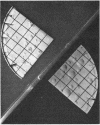Abstract
Early appropriate treatment of bacteremia is important in minimizing morbidity and mortality. Standard blood culture methods are not optimal since several days are often required for recovery and identification of organisms which may be present in the blood. The use of a membrane filter technique allows one to grow any organisms present in blood much more rapidly than by broth or pour plate culture. Furthermore, growth is in the form of typical colonies on the surface of solid media, and a series of rapid diagnostic tests may be used to provide speedy identification. Use of membrane filters also facilitates removal by washing of normal antibacterial factors and antimicrobial drugs which may be present in blood. Although the filter technique yielded the most rapid growth, broth culture and whole blood pour plates yielded more positive cultures and use of all three systems was necessary for maximal recovery of organisms in blood cultures. Data on quantitative aspects of bacteremia in the antimicrobial era are also presented. The number of low level bacteremias (10 colonies/ml or less) is surprisingly high. This is particularly true for gram-negative bacilli; antimicrobial therapy at the time of culture undoubtedly influenced these results greatly. Finally, suggestions are given for a much simpler and more efficient membrance filter blood culture technique.
Full text
PDF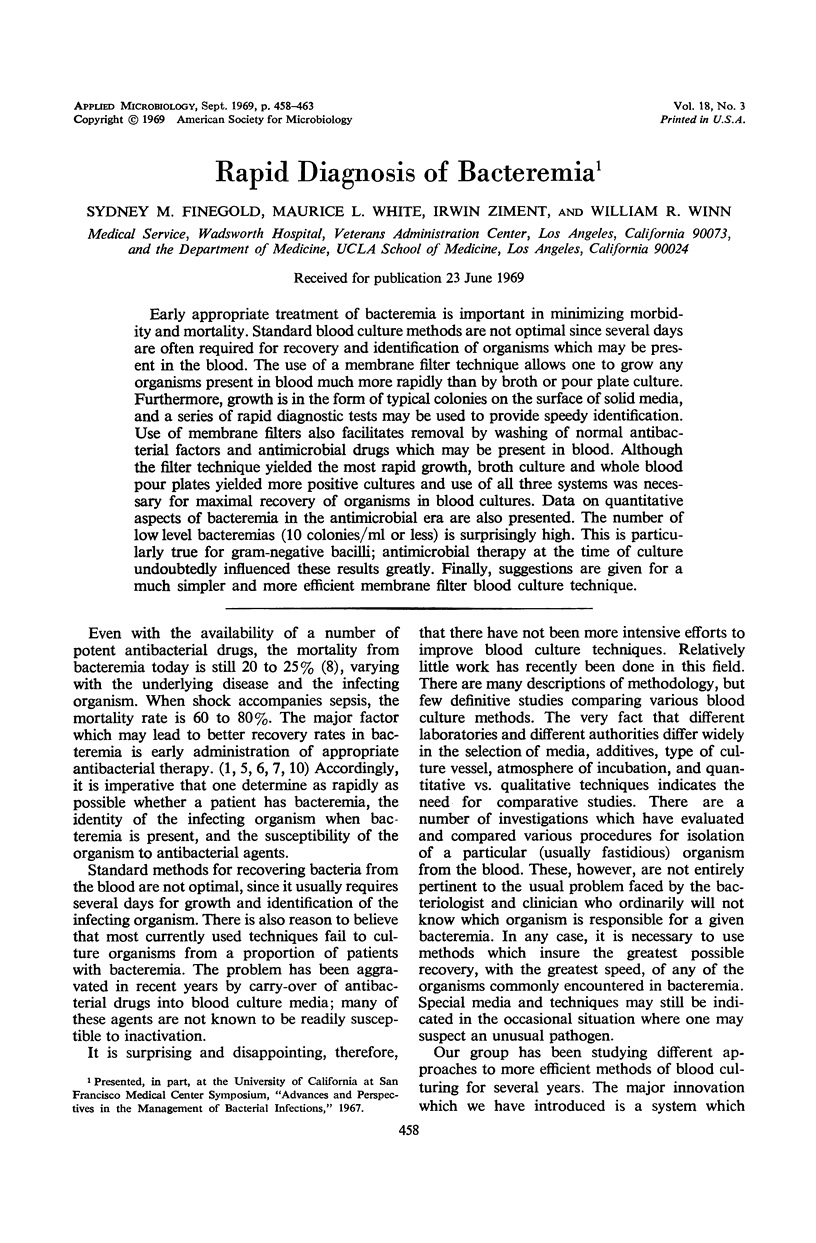
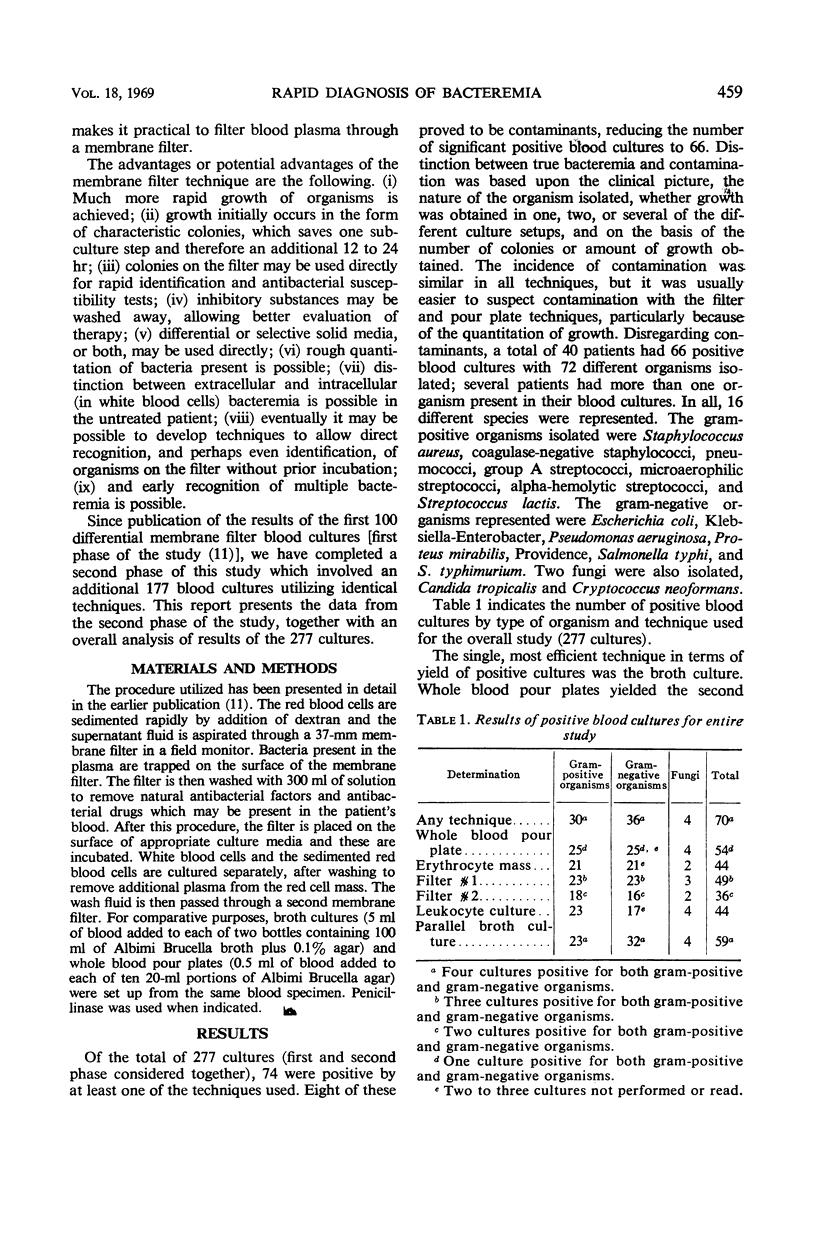
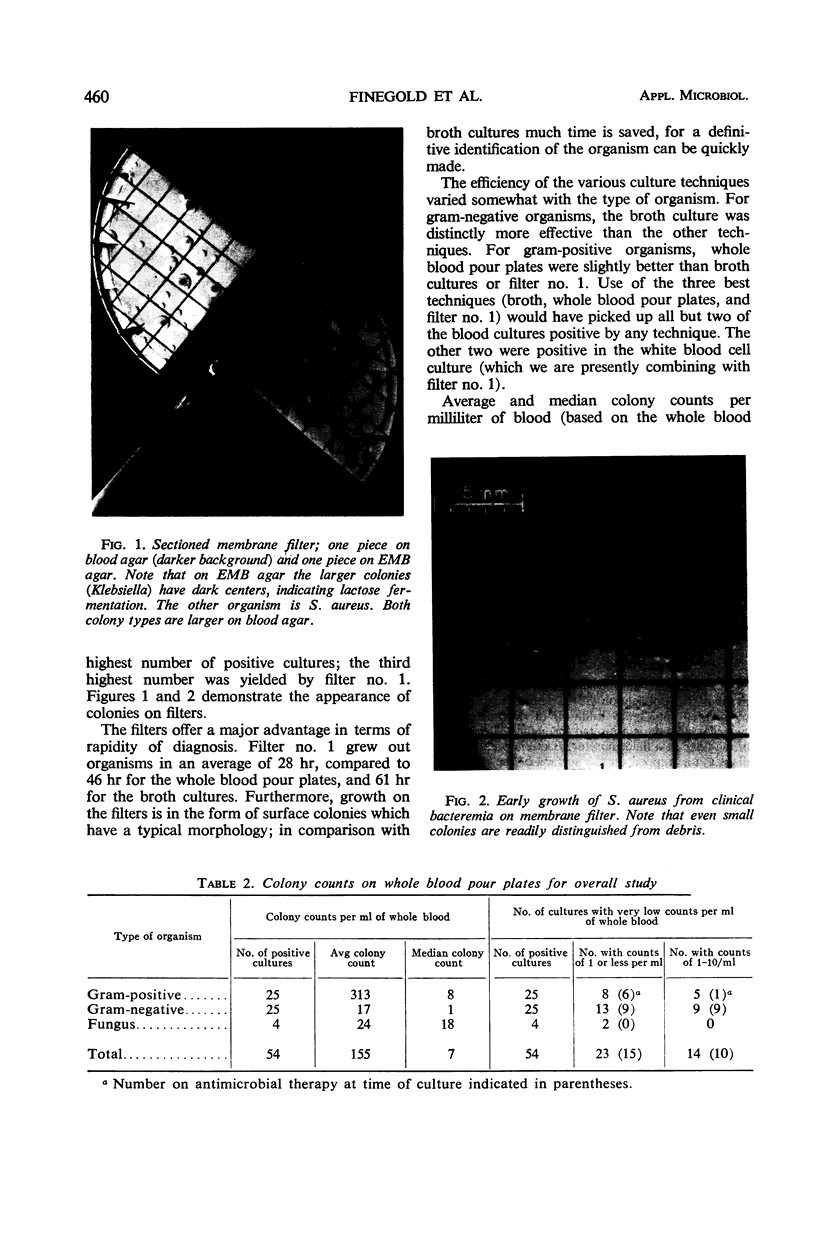
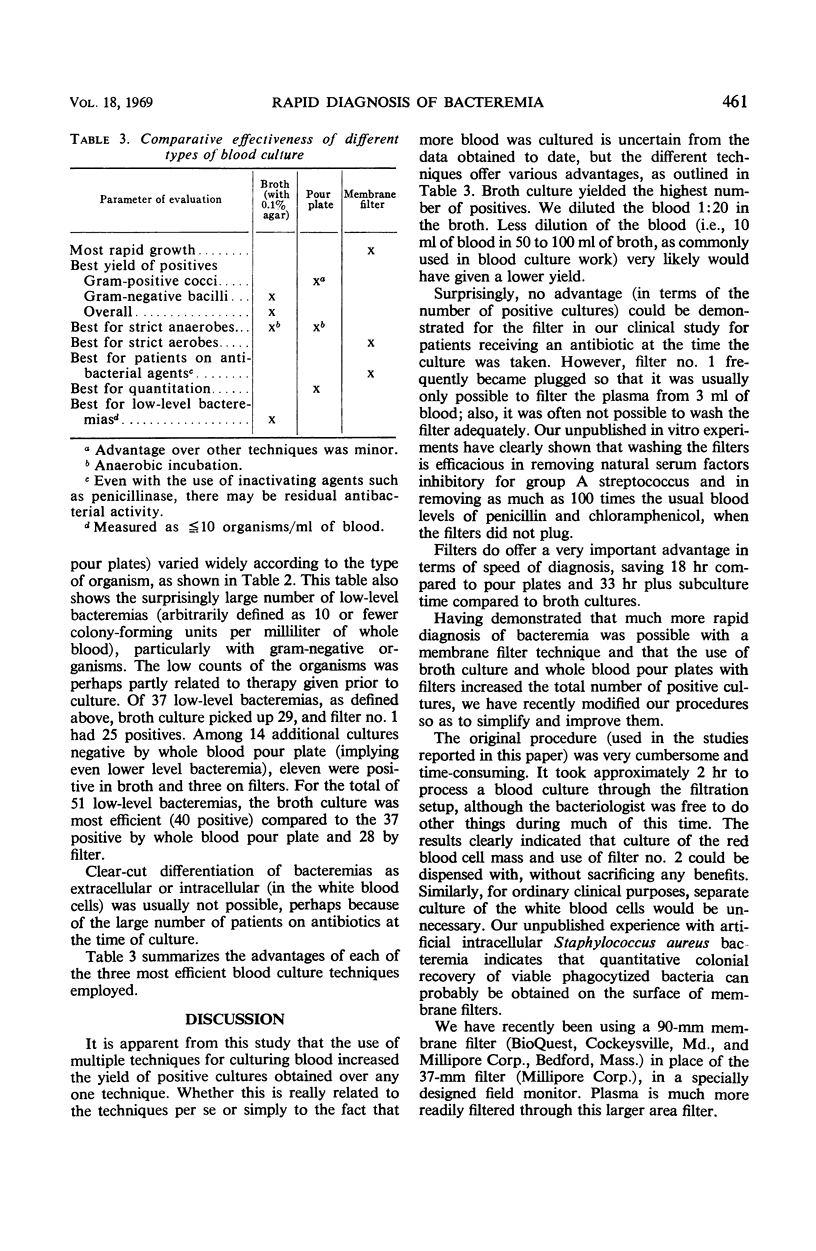
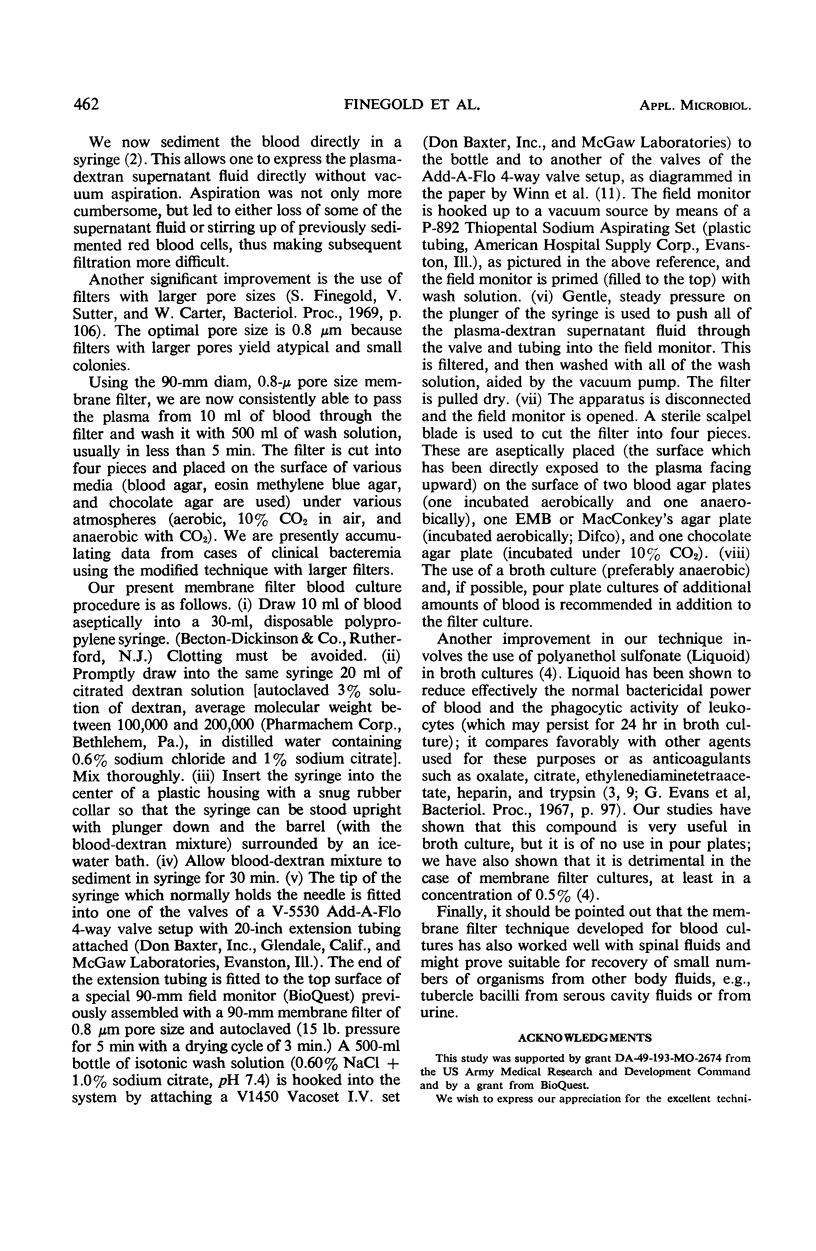
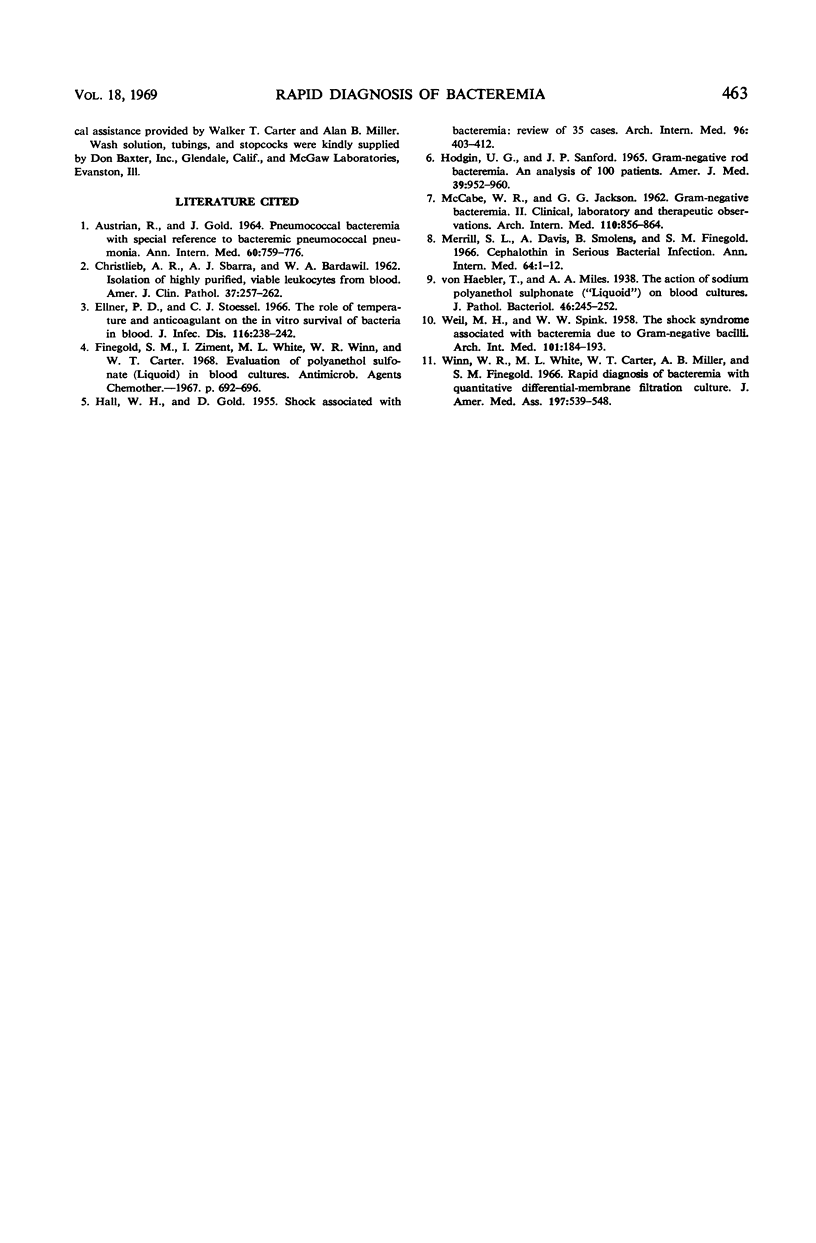
Images in this article
Selected References
These references are in PubMed. This may not be the complete list of references from this article.
- AUSTRIAN R., GOLD J. PNEUMOCOCCAL BACTEREMIA WITH ESPECIAL REFERENCE TO BACTEREMIC PNEUMOCOCCAL PNEUMONIA. Ann Intern Med. 1964 May;60:759–776. doi: 10.7326/0003-4819-60-5-759. [DOI] [PubMed] [Google Scholar]
- CHRISTLIEB A. R., SBARRA A. J., BARDAWIL W. A. Isolation of highly purified, viable leukocytes from blood. Am J Clin Pathol. 1962 Mar;37:257–262. doi: 10.1093/ajcp/37.3.257. [DOI] [PubMed] [Google Scholar]
- Ellner P. D., Stoessel C. J. The role of temperature and anticoagulant on the in vitro survival of bacterial in blood. J Infect Dis. 1966 Apr;116(2):238–242. doi: 10.1093/infdis/116.2.238. [DOI] [PubMed] [Google Scholar]
- Finegold S. M., Ziment I., White M. L., Winn W. R., Carter W. T. Evaluation of polyanethol sulfonate (liquoid) in blood cultures. Antimicrob Agents Chemother (Bethesda) 1967;7:692–696. [PubMed] [Google Scholar]
- HALL W. H., GOLD D. Shock associated with bacteremia; review of thirty-five cases. AMA Arch Intern Med. 1955 Sep;96(3):403–412. doi: 10.1001/archinte.1955.00250140125014. [DOI] [PubMed] [Google Scholar]
- Hodgin U. G., Sanford J. P. Gram-negative rod bacteremia. An analysis of 100 patients. Am J Med. 1965 Dec;39(6):952–960. doi: 10.1016/0002-9343(65)90118-x. [DOI] [PubMed] [Google Scholar]
- Merrill S. L., Davis A., Smolens B., Finegold S. M. Cephalothin in serious bacterial infection. Ann Intern Med. 1966 Jan;64(1):1–12. doi: 10.7326/0003-4819-64-1-1. [DOI] [PubMed] [Google Scholar]
- WEIL M. H., SPINK W. W. The schock syndrome associated with bacteremia due to gram-negative bacilli. AMA Arch Intern Med. 1958 Feb;101(2):184–193. doi: 10.1001/archinte.1958.00260140016004. [DOI] [PubMed] [Google Scholar]
- Winn W. R., White M. L., Carter W. T., Miller A. B., Finegold S. M. Rapid diagnosis of bacteremia with quantitative differential-membrane filtration culture. JAMA. 1966 Aug 15;197(7):539–548. [PubMed] [Google Scholar]



